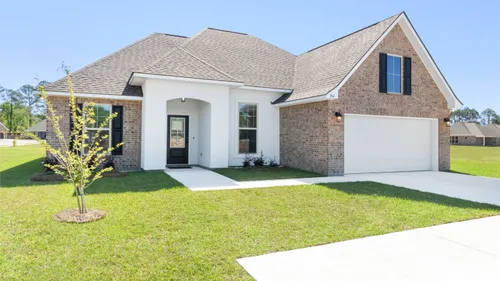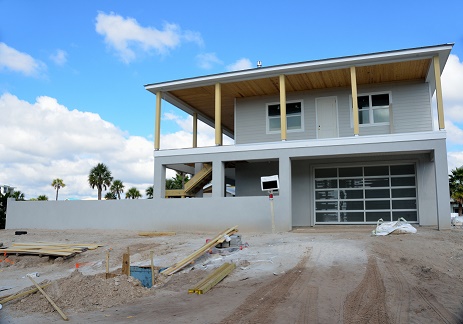Comprehensive Solutions from a Relied On Carmel In Contractor
Comprehensive Solutions from a Relied On Carmel In Contractor
Blog Article
Just How a General Contractor Can Transform Your Usual Areas Into Useful Rooms
The transformation of typical areas into practical areas is a nuanced process that needs a basic professional's know-how in assessing details neighborhood demands and making customized solutions. By taking into consideration factors such as design, ease of access, and aesthetic appeal, a contractor can produce settings that not just offer functional objectives however also foster area engagement.
Assessing Current Common Location Requirements
When examining typical areas, it is crucial to determine and comprehend the certain demands of the area they offer. This procedure starts with a detailed evaluation of present usage patterns, which involves event data on foot website traffic, height use times, and tasks happening within these rooms. Involving with community members through studies or meetings can offer beneficial insights into their choices and difficulties.
Next, it is essential to think about the demographic make-up of the community, including age, way of living, and any special requirements that may impact exactly how these areas are used. Family members with young kids might need play locations, while older grownups might focus on accessibility functions.
Furthermore, reviewing the existing framework and amenities is important. Determining areas that are underutilized or in need of repair work can educate potential enhancements. Collaborating with stakeholders, such as residential property supervisors and regional organizations, makes certain that the assessment mirrors an extensive understanding of the neighborhood's requirements.
Inevitably, a careful assessment of current usual area requires prepares for efficient transformations, enabling the production of rooms that foster engagement and improve the total lifestyle within the area.
Designing for Capability and Looks
An extensive understanding of area needs sets the phase for effective design that balances functionality and aesthetic appeals in usual areas. Successful design requires a thoughtful technique that considers both the useful uses the room and the visual allure that improves the environment.
Practical design involves developing areas that cater to the particular activities and interactions of the neighborhood. This may include flexible seating setups for celebrations, accessible pathways for individuals with mobility obstacles, or designated areas for leisure activities. Each element should offer a purpose while guaranteeing convenience of movement and convenience for individuals.
The choice of colors, materials, and lights can considerably impact the perception of an area. Additionally, aligning the design with the community's cultural identification can foster a feeling of belonging and satisfaction.
Budgeting and Resource Allotment
Reliable budgeting and source allowance are crucial parts in the successful improvement of usual areas. A well-defined budget plan describes the monetary parameters within which the task need to run, making certain that expenses are controlled and resources are successfully used. This starts with a detailed evaluation of task needs, consisting of layout aspects, materials, and labor.

A basic professional plays a vital function in this phase, working together with stakeholders to establish realistic budget plan quotes that line up with the desired vision. By focusing on vital functions and discovering cost-efficient options, the specialist can enhance costs without compromising quality.
Resource allocation entails strategically appointing workers, devices, and products to different phases of the project (Kitchen Remodeling Indiana). This needs careful preparation to pop over to this site guarantee and prevent hold-ups that each part is supplied on schedule. Additionally, normal monitoring of expenses against the budget helps to identify possible overruns early, enabling for prompt modifications
Managing Construction Refine Efficiently
Managing the building procedure effectively is necessary for achieving prompt job completion and maintaining spending plan integrity. A well-coordinated approach entails meticulous planning, clear communication, and effective source administration. General contractors have to develop an in-depth task timeline that details each phase of building, enabling the recognition of crucial milestones and potential bottlenecks.
Normal progress conferences are critical for maintaining all stakeholders notified and lined up. These conferences help with the timely resolution of issues, making sure that the task remains on track. Furthermore, utilizing project monitoring software program can simplify interaction, track development, and handle documents, reducing the chance of delays and misunderstandings.
Effective resource allotment is also extremely important. By making certain that materials, labor, and equipment are available when needed, basic professionals can avoid costly interruptions. Applying a positive method to risk monitoring further boosts effectiveness, as it enables for the identification and reduction of possible difficulties before they intensify.

Making Certain Compliance and Quality Criteria
Compliance and high quality standards are basic to the success of any building and construction job, guaranteeing that the completed areas not just fulfill customer expectations yet likewise stick to governing requirements. A basic service provider plays a crucial duty in applying these criteria throughout the construction process.
First, it is important for the service provider to remain upgraded on neighborhood building codes, safety guidelines, and market best techniques. This expertise enables them to direct style options and product options that line up with compliance standards. Regular assessments and high quality assessments during the building view stage help to determine possible concerns early, reducing costly hold-ups and revamp.
Moreover, a trusted basic specialist promotes a society of high quality among visite site employees and subcontractors. This can be achieved by providing training on conformity procedures and implementing strict quality assurance procedures. By establishing clear interaction networks, the service provider can make certain that everyone involved understands their obligations pertaining to compliance and quality.
Final Thought
In verdict, the function of a basic specialist in changing usual locations into functional spaces is pivotal. Via a detailed analysis of neighborhood needs, thoughtful layout, precise budgeting, and effective project monitoring, these experts can create environments that enhance usability and visual allure. Adherence to compliance and top quality requirements further makes sure that renewed spaces not just fulfill the expectations of stakeholders but additionally foster engagement and enhance the general experience for all individuals within the community.
The makeover of usual locations right into useful rooms is a nuanced procedure that requires a general contractor's experience in assessing particular community needs and making customized remedies. By considering aspects such as design, ease of access, and aesthetic charm, a professional can create atmospheres that not only serve useful purposes however additionally foster community engagement. General professionals need to establish a detailed task timeline that describes each phase of building, permitting for the recognition of potential traffic jams and important milestones.

Report this page